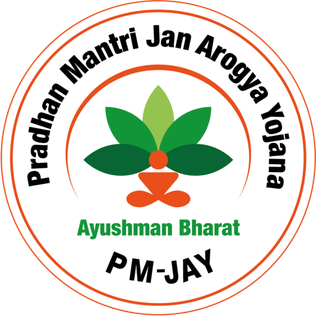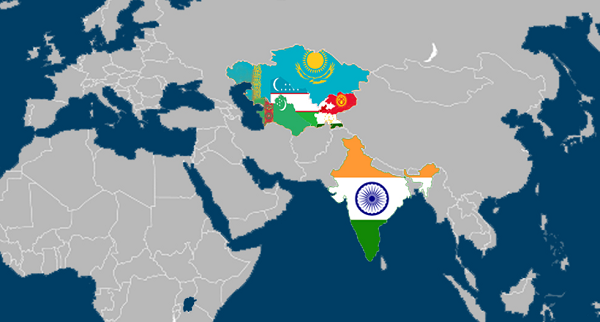- Courses
- GS Full Course 1 Year
- GS Full Course 2 Year
- GS Full Course 3 Year
- GS Full Course Till Selection
- MEP (Mains Enrichment Programme) Data, Facts
- Essay Target – 150+ Marks
- Online Program
- GS Recorded Course
- NCERT- First Ladder
- Polity
- Geography
- Economy
- Ancient, Medieval and Art & Culture AMAC
- Modern India, Post Independence & World History
- Environment
- Governance
- Science & Technology
- International Relations and Internal Security
- Disaster Management
- Ethics
- Current Affairs
- Indian Society and Social Issue
- CSAT
- 5 LAYERED ARJUNA Mentorship
- Public Administration Optional
- ABOUT US
- OUR TOPPERS
- TEST SERIES
- FREE STUDY MATERIAL
- VIDEOS
- CONTACT US
Rising Costs for Senior Citizens Under Ayushman Bharat
Rising Costs for Senior Citizens Under Ayushman Bharat
10-08-2024

Beneficiaries aged 70 years and above made up over 12% of all admissions under the government’s flagship Ayushman Bharat health insurance scheme.
- Their treatment costs accounted for nearly 14% of the total expenditure till January 2024.
- Data shows that of the nearly 6.2 crore approved hospital admissions till January 2024, 57.5 lakh were senior citizens aged 70 years and more.
- The government’s expenditure for treatments under the scheme reached ₹79,200 crore over the last six years till January 2024, with ₹9,878.5 crore allocated to treat those 70 years and over.
Economic Potential and Challenges
- The costs and number of admissions present a challenge for the BJP-led government, with an ambitious expansion of Ayushman Bharat to include all individuals over 70, irrespective of their economic status.
- This move is set to add nearly 4 crore new beneficiaries to the programme.
- Currently, only the poor, identified in the SECC data, have access to the annual ₹5 lakh coverage under the scheme.
- Experts estimate that expanding coverage to all persons over 70 years would be more costly than covering the poorest 40% across all age groups due to health-seeking behavior and higher likelihood of policy utilization.
- Premiums are likely to be higher for older individuals due to their greater need for healthcare related to chronic conditions.
Budget Allocation
- While the Ayushman Bharat insurance scheme was extended for ASHA and Anganwadi workers during the government’s interim budget in February, no mention of further expansion was made in the full Budget presented in July.
- The allocation for the insurance scheme increased by only ₹100 crore to ₹7,300 crore.
Demographic Impact
- With an aging population and inadequate health coverage, the expansion for those over 70 years across all income groups is expected to have a significant impact.
- India’s population over the age of 60 years is estimated to increase from 8.6% in 2011 to 19.5% by 2050, according to the Longitudinal Ageing Study in India (LASI).
- In terms of absolute numbers, the population over 60 years is set to triple from 103 million in 2011 to 319 million in 2050.
State-wise Variability
- The proportion of hospital admissions for older individuals exceeded 10% — their projected share in the country’s total population — in several states:
- Maharashtra: 20.49%
- Kerala: 18.75%
- Haryana: 18.13%
- Bihar: 16.56%
- Himachal Pradesh: 16.37%
- Uttarakhand: 15.23%
- Telangana: 11.53%
- Uttar Pradesh: 10.99%
- Karnataka: 10.92%
- Jharkhand: 10.35%
- Punjab: 10.14%
- Tamil Nadu recorded the lowest proportion of hospital admissions under the scheme for older individuals, comprising only 3.12% of total admissions. Despite lower admission rates, Tamil Nadu’s spending on elderly care was 7.45% of its total healthcare expenditure under the scheme.
High Spending States
- Among the larger states, the highest proportion of spending on elderly care was seen in:
- Maharashtra: 27.49%
- Kerala: 19.9%
- Haryana: 19.8%
- Himachal Pradesh: 16.98%
- Bihar: 16.8%
- Uttarakhand: 16.56%
- Karnataka: 15.04%
- Punjab: 14.67%
- Maharashtra not only had high hospitalizations for older individuals but also substantial spending.
Key Highlights About Ayushman Bharat Scheme:
- About: Ayushman Bharat is a flagship scheme of the Government of India aimed at achieving Universal Health Coverage (UHC) and meeting Sustainable Development Goals (SDGs).
- Key Components:
- Health and Wellness Centres (HWCs): Creation of 1,50,000 HWCs to deliver Comprehensive Primary Health Care including maternal and child health, non-communicable diseases, and free essential drugs and diagnostic services.
- Pradhan Mantri Jan Arogya Yojana (PM-JAY): The world’s largest health assurance scheme, providing ₹5 lakh coverage per family per year for secondary and tertiary care hospitalisation, targeting over 12 crore poor and vulnerable families.
- Implementation: Managed by the Ayushman Bharat National Health Protection Mission Agency (AB-NHPMA). States and UTs are advised to implement the scheme through a dedicated State Health Agency (SHA), which can operate through an insurance company, trust/society, or integrated model.
- Impact: Expected to significantly reduce Out-of-Pocket Expenditure for healthcare, covering nearly 40% of the population with ₹5 lakh per family, leading to improved health outcomes.
Other Health-Related Initiatives for the Elderly in India
- Seniorcare Aging Growth Engine Initiative
- Rashtriya Vayoshri Yojana
- SACRED Portal for Elderly
- Elder Line: Toll-Free Number for Elderly
What should be done?
- Targeted Interventions: Develop specialized packages addressing common geriatric conditions to optimize resource allocation. Emphasize preventive healthcare and early intervention to reduce the severity of illnesses among the elderly.
- Financial Sustainability: Increase budgetary allocation for Ayushman Bharat, especially for geriatric care. Explore public-private partnerships to share the financial burden.
- Focus on Preventive Healthcare: Implement preventive healthcare measures targeting chronic conditions to lower overall healthcare costs. Promote community health programs that encourage regular check-ups and early detection of health issues, particularly in rural areas with limited access to healthcare.




